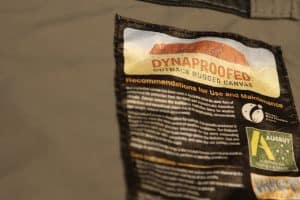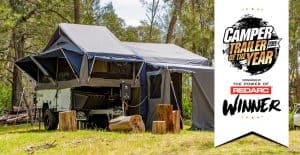
From where you’d rather be – Horseshoe Bay Holiday Park, Coffs Harbour, NSW
The Horseshoe Bay Holiday Park in Coffs Harbour, it is nestled between hinterland, rivers and the ocean to make it one destination that is just
The camper trailers are better at Bluewater. Look no further if you are looking for a great camper trailer to get you and your family off-road and off-grid. We design and manufacture premium quality, great value off-road camper trailers for all Australian conditions.
Bluewater Camper Trailers is dedicated to producing high-standard off-road camper trailers. We use only the highest quality Australian components and offer exceptional customer service.
We guarantee that we have a model to suit your needs, so explore our range of off-road camper trailers today!
All our tents are designed in-house and manufactured from Australian Canvas to withstand the elements Australia has to offer.
We are a family-owned and operated business, part of the Eagle Outdoors Group Pty Ltd, with outlets in Queensland, Victoria, New South Wales, and Western Australia. We also have agents in South Australia, Northern Territory, and New South Wales.
Discover Australia today in a Bluewater Camper Trailer.



Bluewater Campers is an Australian owned and operated company, part of the Eagle Outdoors Group Pty Ltd. The Bluewater difference is based around the value or our camper trailers, the service we offer our customers, the ongoing innovation to improve our products and stay ahead of industry trends, our tent design, and the components we install into our camper trailers.
We aim to produce premium quality camper trailers at affordable prices, as we want everyone to be able to get into a Bluewater Camper Trailer and Discover Australia. The service we offer is also second to none, taking pride in providing continued customer support for the entire time you own the camper.
Some of the key innovations Bluewater Campers have made over the years have included set height hoops, snake track, Eagle Wing (e-Wing) and more. With unique tent designs, inclusion of quality components in all Forward Fold and Hybrid Camper Trailers and so much more. It is clear why when choosing your next Camper Trailer you should look no further than Bluewater Campers.
When it comes to outdoor adventures, choosing the right camper for you and your family is crucial to ensure a comfortable and enjoyable trip. Bluewater Campers offers both Forward Fold and Hybrid Campers, all with varying sleeping configurations to cater to all. From lone explorers, to couples, to families with small kids and families with older kids we have you covered.
A forward fold camper trailer is comprised of a solid/hard base with a folding lid and tent/canvas top, providing ample sleeping and living spaces both inside the camper and outside. Built to withstand harsh Australian conditions. You’ll have everything you need to enjoy the great outdoors.
A hybrid camper trailer is a cross between a camper trailer and a caravan, with solid walls, providing better insulation and an extendable roof, meaning it can pack down in size but once you are parked up ready to camp you can enjoy the space and luxuries of home, including a king bed and ensuite in most of our models.
We looked to upgrade from our soft floor Tan Cheng Camper for 12 months and bought our Murray Bluewater Camper just over a year ago on our way home to Melbourne from Brisbane at the Sydney show and we love it. You are not going to get quality, no nonsense sales, after sales and a more supportive team than Rob and the guys at Bluewater anywhere else. I know! We’ve looked. We now look forward to any and every opportunity to get away in our first class quality Murray.
We have been very happy with our Lachlan and just as important is the after sales service we recieved in trying times has been outstanding . Allan and his team have been fantastic ,very much reccommend .
Bluewater Campers are a great company to deal with and supply a high quality product. We had no high pressure sales tactics put on us, the sales staff were informative and very helpful. All email communications were answered promptly. Our Darling is easy to setup, and while it is heavy, it tows beautifully and is easy to reverse. Another happy (Bluewater) camper.
Great advice and help, and their camper trailers look fantastic. I can't afford a camper trailer yet, but these guys are easily on top of my list for when I do.
We have had our Murray forward fold for 18 months and have towed it to some awesom locations. Our 3 kids have never had so much fun and are always trying to clear my wifes and my calender so we can go away more often. Bluewater are a fantastic team from the front end to the back end of the business, highly professional and true to their word. The after sales support is second to none. Our camper is well built and robust to say the least, it tows extreemly well and is easy to set up, we have packed it up in heavy rain a few time to find that when unpacked at home the water was contained in the canvas and had not seeped into the main lounge area, just another example of the quality of the canvas and stitching. Great company, great product.
Great camper,great after sales service highly recommend,enjoying a BW every time
Absolutely loving this....great service from go to wo and follow up service was treated like royalty. The camper we purchased has everything you could imagine whilst still feeling like you are tent camping but only elevated in platinum diamond status. The camper tows extremely well, has been out together solidly using the finest material and top quality parts and finishes.
Outstanding campers and service. After looking at pretty much all on the market, Bluewater had the best layout, quality components and price. Since purchasing, the service has been outstanding including helping us over the phone when on trips and doing upgrades. Can't recommend them enough!
We looked to upgrade from our soft floor Tan Cheng Camper for 12 months and bought our Murray Bluewater Camper just over a year ago on our way home to Melbourne from Brisbane at the Sydney show and we love it. You are not going to get quality, no nonsense sales, after sales and a more supportive team than Rob and the guys at Bluewater anywhere else. I know! We’ve looked. We now look forward to any and every opportunity to get away in our first class quality Murray.
I have just placed an order for a new Bluewater Lachlan 2018 camper trailer. The quality of their products is outstanding as was the help & assistance given during the process. I fully recommend the product & the service.
A great product. Robust. Comfortable and great quality. The service provided by Bluewater Campers both during the purchase process and their after dales service is of an extremely high standard. I would recommend these campers to anyone looking for a solid, yet comfortable camper.
Had camper trailer booked for suspension level check under warranty dropped it off earlier on a saturday morning and the guys there fixed everything on the spot and saved me a long trip back to pick it up during next week. Thanks Alan, Chris and Scotty
We looked to upgrade from our soft floor Tan Cheng Camper for 12 months and bought our Murray Bluewater Camper just over a year ago on our way home to Melbourne from Brisbane at the Sydney show and we love it. You are not going to get quality, no nonsense sales, after sales and a more supportive team than Rob and the guys at Bluewater anywhere else. I know! We’ve looked. We now look forward to any and every opportunity to get away in our first class quality Murray.
Awsome trailer and service is second to none in this industry Would definatly buy from them again
Have own a Bluewater camper for a year now.have done some 6000 ks with it behind my car. It has traveled on good roads and really bad ones as well. Our Darling is not light but very strong and sits behind the car extremely well. It has seen rain for days and not a drop of water inside. Takes us about 15 minutes to set it up and less than 5 to pack it. After sales service is excellent. They always have time for you and are there if you need a hand. We are very happy and would recommend to anyone to deal with Bluewater as they are the real thing in quality and service. Orlando Arancibia
Out of the similar designs we researched,determining the upmarketed features with other companies.BluewaterCampers came up as mid-range choice, moderately priced, good Australian made tent canvas, everything important refitted with local and Australia wide products to make it last for their 5 year warranty.
Highly recommend this company to anyone. My wife and i purchased a Darling model camper (2017) our purchase experience was fantastic, Rob and the team provided us with the type of service you can only wish for and most importantly that service has continued after the sale!
Long after you forget the price you will remember how you were treated. Fantastic after sales service, polite, courteous and professional. Purchased a new Murray, Had a few electric hiccups, Josh in Perth persevered and never once tried to avoid finding a solution. Can’t fault the company ethics and loving the Camper. Buy from these guys with confidence.
Great Campers. Great service. We originally saw Bluewater Campers about 3 years ago. Some 15 month later we bought one simply because we didn't find anything better. And we still haven't. And the customer service is 5 stars. Always helpful always a smile.
Our lachlan is the best camper we've owned it ticks all the boxes offroad on road cumfy beds heaps of storage

The Horseshoe Bay Holiday Park in Coffs Harbour, it is nestled between hinterland, rivers and the ocean to make it one destination that is just

This nachos recipe is sure to be a winner with the whole family while camping.

We have put together below a number of tips and tricks for caring for your Bluewater Camper Trailer canvas.

“An impressive forward fold that shows the benefits of endless attention to detail” David Cook, CTOTY Judge
BLUEWATER CAMPERS WOULD LIKE TO ACKNOWLEDGE THE TRADITIONAL OWNERS OF THE LAND. WE PAY OUR RESPECTS TO THEIR ELDERS, PAST AND PRESENT, AND THE ABORIGINAL ELDERS OF OTHER COMMUNITIES WHO MAY BE HERE TODAY. WE CELEBRATE THE STORIES, CULTURE AND TRADITIONS OF ABORIGINAL AND TORRES STRAIT ISLANDER ELDERS OF ALL COMMUNITIES WHO ALSO WORK AND LIVE ON THIS LAND.
Become part of our Bluewater Discoverers Club where you will receive exclusive, never before seen content, updates & releases before anyone else, behind the scenes content and much more.

